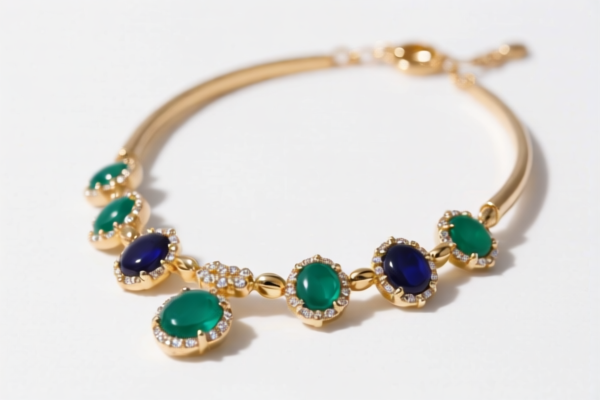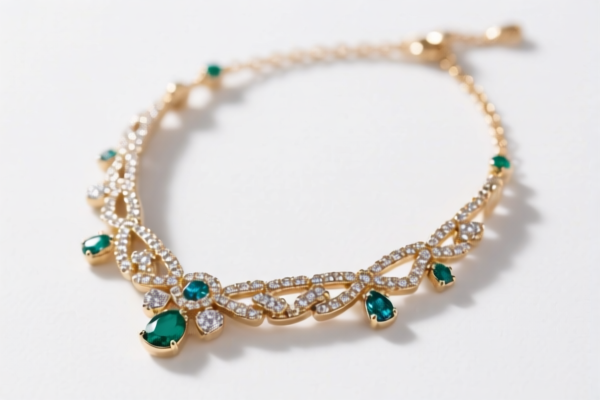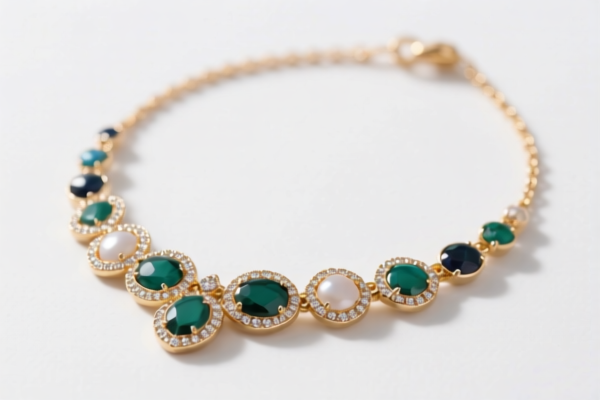| HS Code | Official Doc | Tariff Rate | Origin | Destination | Effective Date |
|---|---|---|---|---|---|
| 7113193000 | Doc | 43.3% | CN | US | 2025-05-12 |
| 7113203000 | Doc | 43.3% | CN | US | 2025-05-12 |
| 7115903000 | Doc | 58.9% | CN | US | 2025-05-12 |
| 7115904000 | Doc | 58.0% | CN | US | 2025-05-12 |
| 9114904000 | Doc | 46.3% | CN | US | 2025-05-12 |
| 9114905000 | Doc | 41.7% | CN | US | 2025-05-12 |
| 9111907000 | Doc | 43.9% | CN | US | 2025-05-12 |
| 9111905000 | Doc | 1.6¢ each + 6.8%+37.5% | CN | US | 2025-05-12 |




Necklace Clasp
A necklace clasp is a connector mechanism used to secure the ends of a necklace, bracelet, or similar jewelry item. It allows for easy fastening and unfastening while keeping the jewelry securely closed during wear.
Materials
Clasps are manufactured from a variety of metals, chosen for strength, durability, aesthetic appeal, and cost. Common materials include:
- Sterling Silver: A popular choice, offering a bright finish and relative affordability. Prone to tarnishing, requiring regular cleaning.
- Gold: Available in various karats (purity levels) – 10k, 14k, 18k, 24k – impacting color, durability, and cost.
- Platinum: A strong, hypoallergenic, and durable option, often used for higher-end jewelry.
- Stainless Steel: Highly durable, corrosion-resistant, and affordable, often used for contemporary designs.
- Brass: A base metal often plated with other metals (gold, silver, rhodium) to improve appearance and resistance to tarnishing.
- Titanium: Lightweight, strong, hypoallergenic, and corrosion-resistant.
- Plastic: Used primarily in costume jewelry or for specific functional purposes (e.g., magnetic clasps for ease of use).
Purpose & Function
The primary purpose of a necklace clasp is to provide a reliable and secure connection between the two ends of a necklace. Beyond simple fastening, clasps contribute to:
- Security: Preventing the necklace from accidentally opening during wear.
- Aesthetics: The clasp itself can be a decorative element, complementing the overall design of the necklace.
- Ease of Use: Different clasp types cater to varying levels of dexterity and user preference.
Usage Scenarios
Necklace clasps are employed in a wide range of jewelry applications:
- Daily Wear: Simple, secure clasps like lobster or spring ring clasps are common.
- Fine Jewelry: More intricate and secure clasps, like box clasps or toggle clasps, are often used.
- Costume Jewelry: Plastic or base metal clasps are frequently found.
- Self-Made Jewelry: A variety of clasp types are available for jewelry makers to attach to their creations.
- Necklaces with delicate chains: Smaller, more refined clasps are needed to avoid damaging the chain.
Common Types
- Lobster Clasp: Features a spring-loaded, claw-like mechanism that securely closes around a jump ring. Very common and reliable.
- Spring Ring Clasp: A simple, circular clasp with a spring-loaded opening. Easy to use but can be less secure than a lobster clasp.
- Toggle Clasp: Consists of a ring and a T-shaped bar that interlocks. Offers a distinctive look and can be more secure.
- Box Clasp: Features a hollow box shape with a hinged tongue that fits into a corresponding receiver. Secure and often decorative.
- Hook and Eye Clasp: A simple clasp consisting of a hook and a corresponding eye. Often used in vintage jewelry.
- Magnetic Clasp: Uses magnets to connect, offering ease of use, particularly for individuals with dexterity issues. Less secure than other types.
- Barrel Clasp: Consists of two interlocking barrels, often used with multi-strand necklaces.
- S-Hook Clasp: Features an S-shaped hook that attaches to a jump ring. Simple and easy to use.
- Fish Hook Clasp: Similar to S-hook, often used with beaded necklaces.
Necklace Clasp Classification
Based on the provided information, the following HS codes may be relevant to “necklace clasp”:
- 7113193000: Articles of jewelry and parts thereof, of precious metal or of metal clad with precious metal: Of precious metal whether or not plated or clad with precious metal: Other: Clasps and parts thereof. This code covers clasps made of precious metals, including those plated or clad with precious metals. The first two digits (71) indicate articles of jewelry. The next two (13) specify jewelry and parts thereof, of precious metal or of metal clad with precious metal. The final digits (193000) further define it as clasps and parts thereof made of precious metal. The total tax rate is 43.3%.
- 7113203000: Articles of jewelry and parts thereof, of precious metal or of metal clad with precious metal: Of base metal clad with precious metal: Other: Clasps and parts thereof. This code applies to clasps made of base metal that are clad with precious metal. The first two digits (71) indicate articles of jewelry. The next two (13) specify jewelry and parts thereof, of precious metal or of metal clad with precious metal. The final digits (203000) further define it as clasps and parts thereof made of base metal clad with precious metal. The total tax rate is 43.3%.
Important Note:
Regarding HS codes 7113193000 and 7113203000, the classification depends on the material composition of the clasp. If the clasp is made entirely of precious metal (e.g., gold, silver, platinum), use 7113193000. If it is a base metal with a precious metal coating, use 7113203000.
Customer Reviews
No reviews yet.